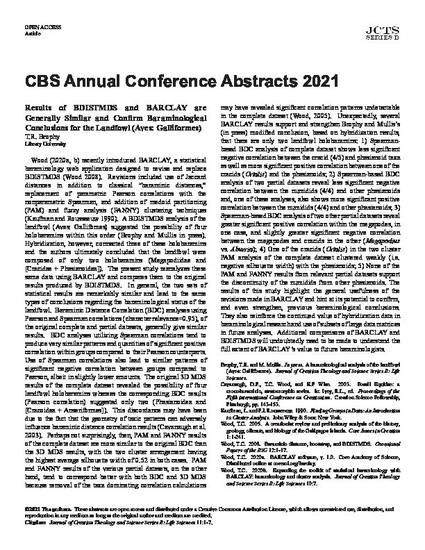
Wood (2020a, b) recently introduced BARCLAY, a statistical baraminology web application designed to revise and replace BDISTMDS (Wood 2008). Revisions included use of Jaccard distances in addition to classical “baraminic distances,” replacement of parametric Pearson correlations with the nonparametric Spearman, and addition of medoid partitioning (PAM) and fuzzy analysis (FANNY) clustering techniques (Kaufman and Rousseeuw 1990). A BDISTMDS analysis of the landfowl (Aves: Gallifomes) suggested the possibility of four holobaramins within this order (Brophy and Mullis in press). Hybridization, however, connected three of these holobaramins and the authors ultimately concluded that the landfowl were composed of only two holobaramins (Megapodiidae and [Cracidae + Phasianoidea]). The present study reanalyzes these same data using BARCLAY and compares them to the original results produced by BDISTMDS. In general, the two sets of statistical results are remarkably similar and lead to the same types of conclusions regarding the baraminological status of the landfowl.
